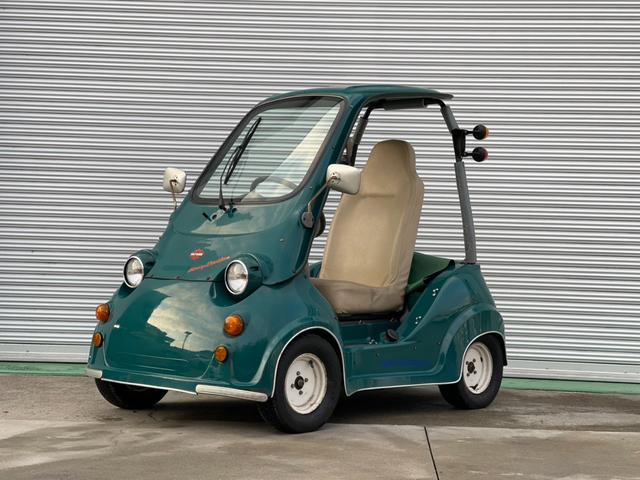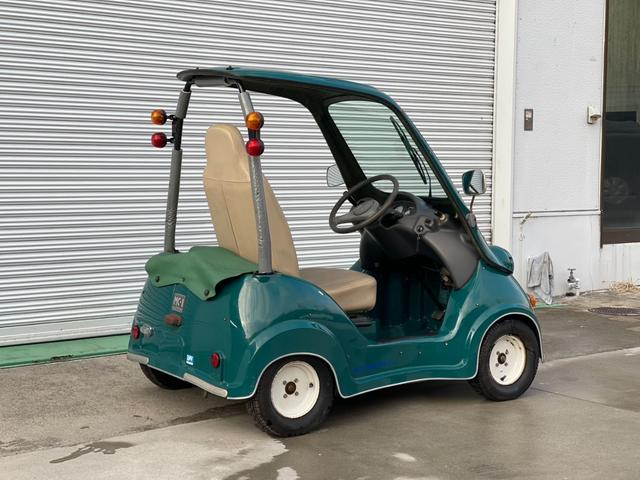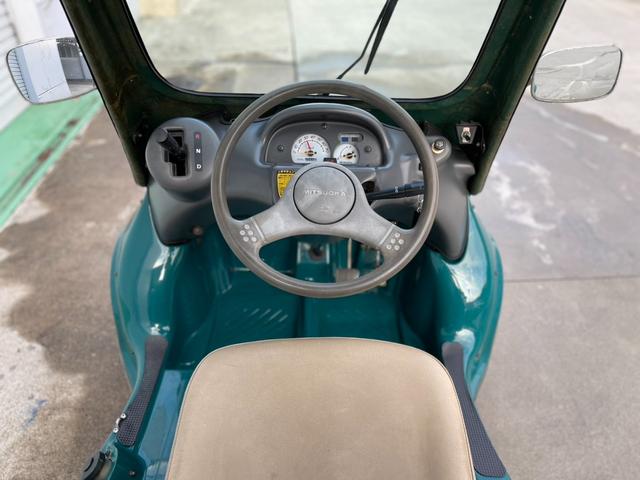
In a world obsessed with speed, luxury, and horsepower, one tiny oddball dared to whisper instead of roar.
Enter the Mitsuoka MC-1 — a vehicle so small, so strange, and so unapologetically quirky that it looked like it drove straight out of a cartoon. Released by the eccentric Japanese carmaker Mitsuoka, known for turning heads with retro-styled machines, the MC-1 wasn’t trying to impress anyone. It simply existed to make you smile… and maybe get you to the grocery store at 25 km/h.
Launched at the turn of the millennium, when the world was dreaming of futuristic hypercars, Mitsuoka quietly rolled out a one-seater shaped like a toaster on wheels. People laughed — until they saw one zipping down the street with a driver who looked suspiciously smug.
Was it a car? A scooter in disguise? A rebellion against practicality? No one was quite sure. But the MC-1 didn’t care. It was light, electric, and so charmingly weird that you couldn’t help but love it.
Though it disappeared almost as quietly as it arrived, the MC-1 remains a cult favorite — a symbol of how Japan sometimes says, “What if we just did it anyway?”

Mitsuoka MC-1 Specifications
-
Power: ~0.58 hp (depending on version — electric motor or 50cc petrol engine)
-
Acceleration (0–30 km/h): Around 10 seconds (it reaches top speed quickly, but that speed is very modest)
-
Top Speed: ~30 km/h (electric version) ~50 km/h (petrol version)
-
Engine:
-
Electric version: small low-output electric motor
-
Petrol version: 49cc single-cylinder 4-stroke engine (sourced from Honda)
-
-
Range: Approx. 50 km on electric power (under ideal conditions)
-
Dimensions:
-
Length: ~1.9 m
-
Width: ~0.9 m
-
Height: ~1.6 m
-
Weight: ~115 kg
-
-
Technology: Extremely minimal — no ABS, no infotainment, often no doors. Basic indicator lights only.
-
Additional Features:
-
Versions with or without a roof
-
In some parts of Japan, could be driven without a driver’s license
-
Ultra-simple design, focused on economy and ease of use
-

Intresting Facts about the Mitsuoka MC-1
It was barely a car
The MC-1 was so small and low-powered that in some parts of Japan it wasn’t even classified as a real car. That meant you could legally drive it without a license — like a mobility scooter on a mission.
It looked like a mix of a fridge, a golf cart, and a bubble
Its oddball shape turned heads everywhere it went. It had no real grille, comically tiny wheels, and a body that looked drawn by a kid with a crayon and a dream.
The MC stood for “Mitsuoka Compact,” but it could’ve stood for “Mini Cartoon”
It was just 1.9 meters long and made Smart cars look like SUVs.
No doors? No problem!
Some versions came without doors. Want to get in? Just… step in. Who needs security when you’re cruising at 25 km/h?
It came in electric and petrol versions
Mitsuoka let you pick between ultra-basic EV power or a tiny Honda-sourced 50cc engine that buzzed like a lawnmower.
It made people smile, not speed
The MC-1 was never meant to race — it was meant to amuse. A car you’d drive because why not?
Designed with “freedom” in mind
Mitsuoka pitched it as a personal mobility solution — perfect for seniors, short commutes, or even just driving around the neighborhood for fun.
It’s now a collector’s oddity
Despite its humble origins, surviving MC-1s have become rare and sought after by collectors of strange and wonderful vehicles.

Conclusion
The Mitsuoka MC-1 wasn’t fast. It wasn’t powerful. It wasn’t even particularly practical.
But it didn’t need to be.
In a world of overengineered machines and aggressive styling, the MC-1 dared to be small, slow, and sincere. It captured the playful side of mobility — a reminder that driving can still be fun, even at 30 km/h. Whether seen as a joke, a genius idea, or something in between, the MC-1 carved out a unique space in automotive history.
Not every car needs to be a supercar. Some just need to make you smile. And the MC-1?
It did that effortlessly.
Future Classics: 7/10
Brand Recognition: 6/10
Design Modernity: 7/10
CarsCorn Score: 6.7/10